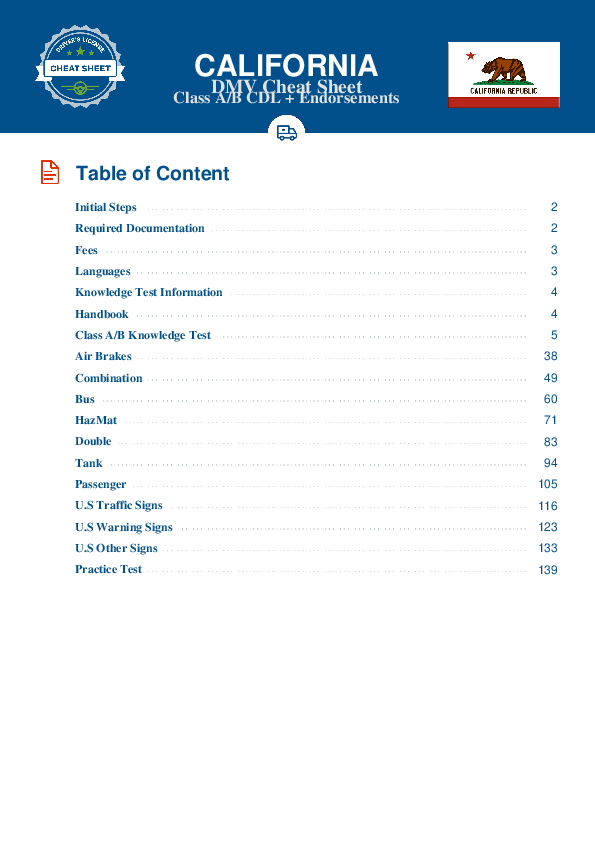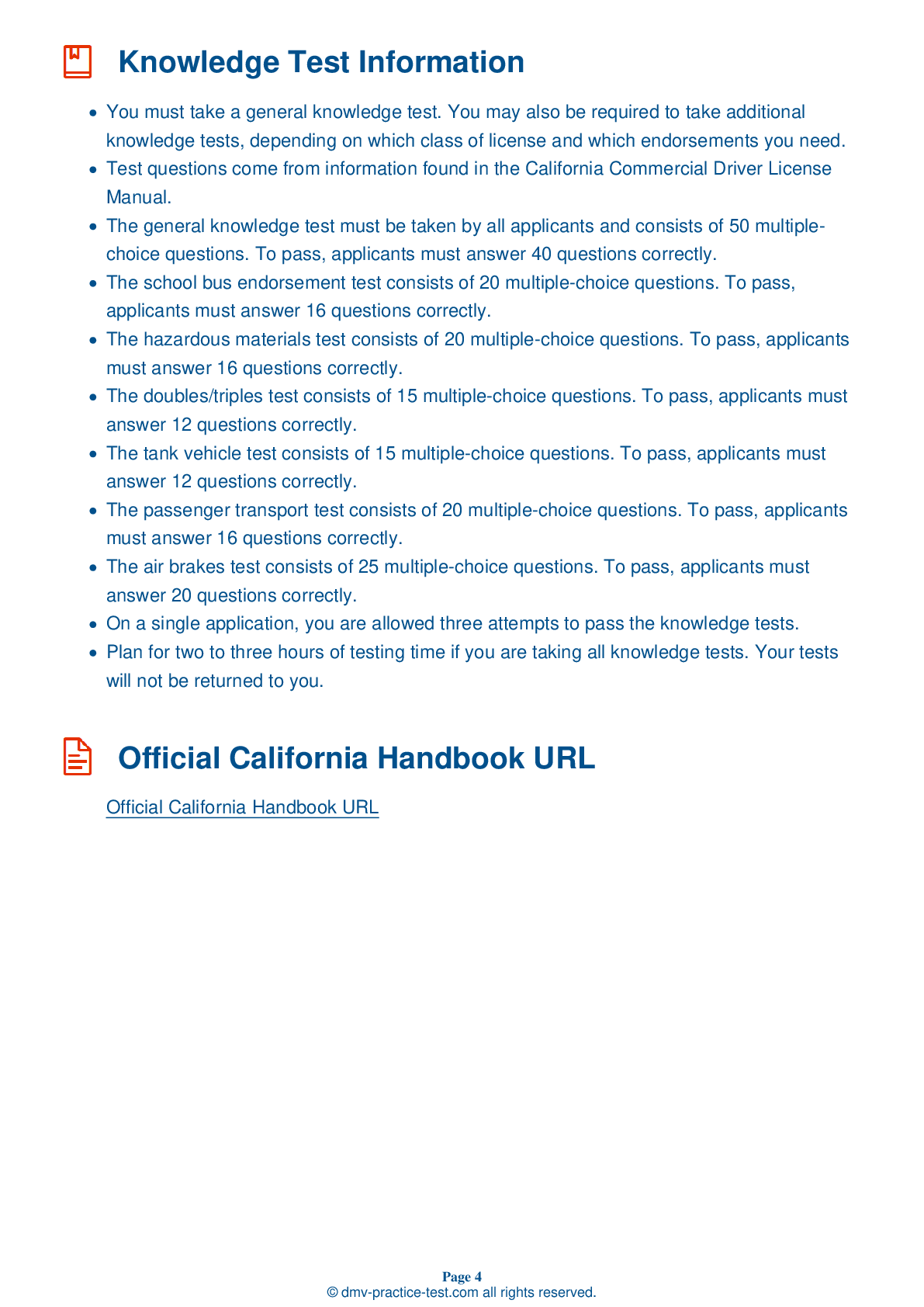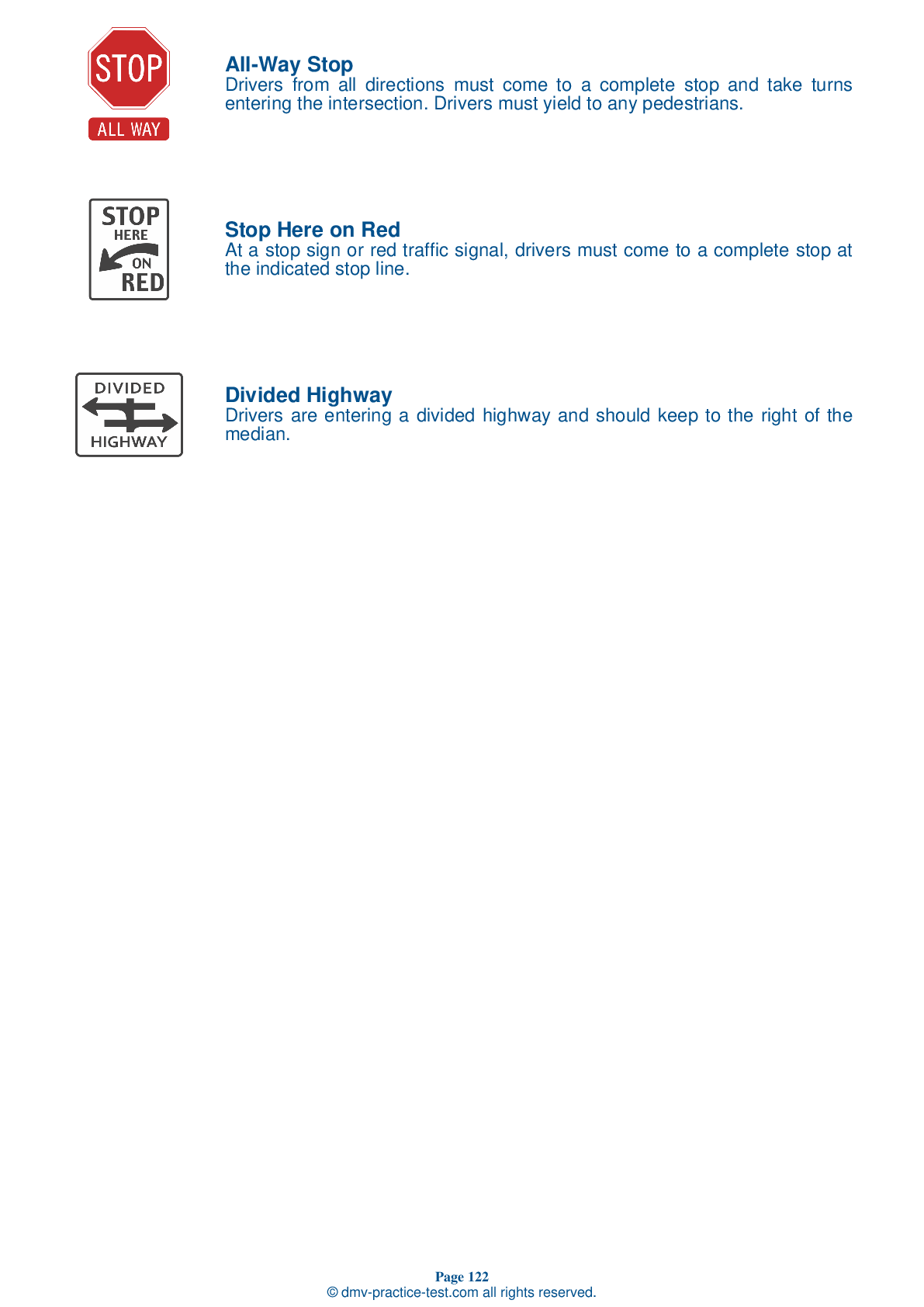Bus #2
Bus Driver Testing | California 2025 #2 Page 3 of 3
Train for FREE online with our CA bus CDL test. The official exam test consists of several obligatory parts, with all of them checking your knowledge of different blocks of road rules. If you need to obtain a license in California in 2025, learn how to become a bus driver and then practice as much as possible. Free sample tests published on our website will help you check and improve your knowledge and boost your grades. Please bear in mind that DMV requirements for a bus driver may vary from state to state.
20
16
20
15 . When exiting a vehicle, a driver should:
When exiting your vehicle during the basic vehicle control skills test, you must face the vehicle and maintain three points of contact at all times. If your testing vehicle is a bus, you must maintain contact with the handrail. Exiting the vehicle incorrectly may result in automatic failure of the basic vehicle control skills test.
16 . A passive railroad crossing:
Railroad crossings that do not display any traffic control devices are known as passive crossings. The decision to proceed across tracks at a passive crossing is entirely up to the driver.
17 . If a student is believed to have suffered a back injury, you should:
A school bus driver should not attempt to move a student who has suffered a neck or spinal injury unless the student's life is in immediate danger.
18 . During a vehicle inspection test, you will:
Vehicle inspection tests are conducted to ensure that a vehicle is safe to operate. During the vehicle inspection test, you will be expected to explain or show your knowledge of the vehicle inspection process. If you do not pass the vehicle inspection test, the other sections of the skills test will be postponed.
19 . When properly adjusted, the flat mirrors on a school bus should display:
Properly adjusted flat mirrors on a school bus should allow the driver to see 200 feet behind the bus, the base of each rear wheel, and the sides of the bus.
20 . If you come to railroad tracks while driving a school bus, you should generally:
In general, school bus drivers should stop before any railroad crossings to check the tracks for approaching trains. Drivers should stop no closer than 15 feet and no farther than 50 feet from the nearest rail in order to have the best view of the tracks. They should look and listen for approaching trains before proceeding through the crossing.
2025 California | Frequently Asked Questions
To acquire a CDL Hazmat endorsement in California, you must first have a Commercial Driver's License (CDL). Then, pass the Hazardous Materials (Hazmat) Knowledge Test at a DMV office. After passing, complete a Transportation Security Administration (TSA) background check. Once cleared, take the Hazmat endorsement form to DMV to add the endorsement to your CDL.
To obtain a CDL Hazmat license in California, you need to have a valid Commercial Driver's License (CDL). You must also pass the Hazardous Materials (Hazmat) endorsement knowledge test, provide a valid Transportation Security Administration (TSA) security threat assessment (background check), and complete fingerprinting. Training on handling hazardous materials is also required.
When applying for a CDL Hazmat endorsement in California, you need to provide your current valid Commercial Driver's License (CDL), proof of U.S. citizenship or lawful permanent residency (birth certificate, passport, or green card), and a completed Medical Examination Report Form. You'll also need to pass a TSA background check and provide fingerprints.
Yes, there is a dedicated written test for the CDL Hazmat endorsement in California. This test is designed to evaluate your knowledge about the rules and regulations related to the transportation of hazardous materials. It covers topics such as loading and unloading, bulk packaging, and emergency response procedures. You must pass this test to obtain the endorsement.
The written test for the CDL Hazmat endorsement covers a variety of subjects related to hazardous materials, including: recognition and identification of hazardous materials, compliance with safety regulations, understanding shipping papers, placarding requirements, loading and unloading procedures, handling emergencies and incidents, and the rules for transporting specific types of hazardous materials.
Yes, there are extra charges associated with acquiring a CDL Hazmat endorsement. In California, you must pay a $30 testing fee. Additionally, fingerprinting for the TSA background check costs approximately $86.50. Please note that these fees are subject to change and it's advisable to check the current rates with your local DMV office.
Yes, obtaining a CDL Hazmat endorsement does require a background check and security clearance. This is mandated by the Transportation Security Administration (TSA) and involves fingerprinting and checking for any disqualifying criminal offenses. The goal is to ensure the safety and security of hazardous materials transportation. It's necessary to pass this check to receive the endorsement.
Yes, specialized training and certification are required for the CDL Hazmat endorsement. Applicants must pass a written test regarding the transportation of hazardous materials. Additionally, they must undergo a TSA background check. These requirements ensure that drivers have the necessary knowledge and skills to safely transport hazardous materials.
No, you cannot legally transport hazardous materials without a valid CDL Hazmat endorsement in California. This endorsement is required to ensure the driver's understanding of safety precautions and procedures for transporting hazardous materials. Driving without it can lead to serious legal consequences including fines and suspension of your commercial driver's license.
Yes, you can add the CDL Hazmat endorsement to your current CDL license. You don't need to apply for a new license. However, you must pass a written Hazmat knowledge test and undergo a TSA background check. Once these steps are completed, the Hazmat endorsement can be added to your existing CDL.



